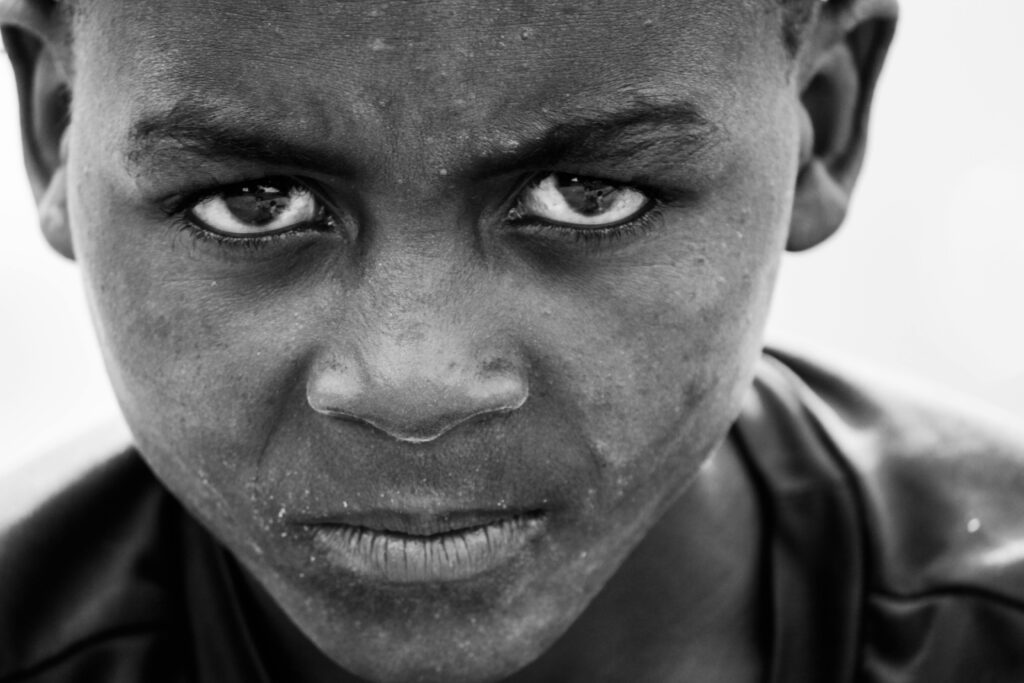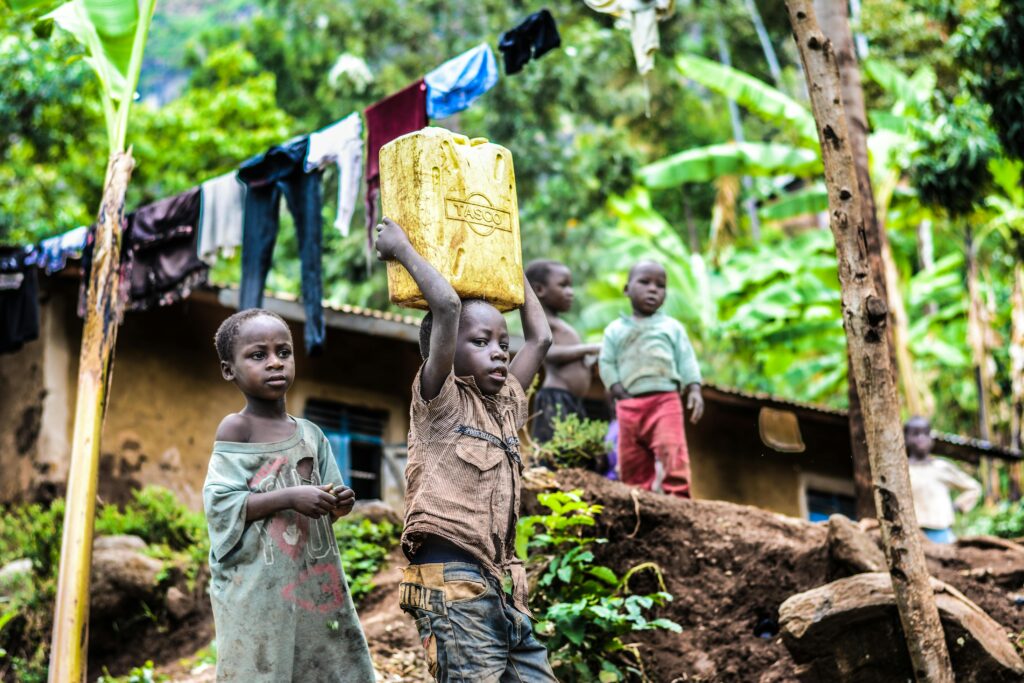
In the fashion industry Working children illegally is a widespread practice in the fashion industry.
There are several instances of child labor in the fashion supply chain, including cotton plucking, leather tanning, dress embroidery, pleat stitching in skirts, and label application on t-shirt
It may be difficult to initially understand how children’s rights and the fashion industry are related. But the fashion industry is much more than “just” clothing. On the one hand, it violates children’s rights to protection, education, and independence by relying largely on child labour. However, being the second most polluting business, it comes at a cost to human health, society, and the environment, violating many children’s right to a safe and healthy environment.
The contemporary fashion industry began in the 19th century with Charles Frederick Worth, who became the first designer to have his label sewn into his creations in 1858. The industry is centred around corporations or fashion houses owned by individual designers. When people first started wearing clothes, fashion emerged.

1. Fashion industry and child labour
The increasing need for reasonably priced apparel resulting from the “democratisation” of fashion has prompted Western enterprises to seek out more economical options from nations like Bangladesh, Pakistan, and India. As a result, producers in low- to middle-income nations are under pressure to meet consumer demands for ever-lower costs in order to maintain their competitiveness. Subcontractors have resorted to using underage labour and extremely low salaries and safety norms as a result of cutting costs at every point of the fashion supply chain.Children are especially suited for jobs demanding dexterity and accuracy due to their tiny hands, such as cotton picking or stitching, which makes them even more susceptible to exploitation in the clothing business.
Furthermore, children present a “business opportunity” for contractors looking for unskilled labourers in developing nations where the majority of fashion items are made. These workers can easily be forced to work because of their youth and be paid far less than the minimum wage. Employers frequently get away with engaging in such practices due to a lack of regulations, including worker unions, and the complexity of the fashion industry supply chain. Additionally, businesses and customers can rarely keep track of where and how the final product has been manufactured.
Extreme poverty directly leads to child labour. Children as young as five years old are often compelled to labour in order for their families to survive when they are living much below the poverty line (UN News, 2021). These children’s deprivation of basic care and education feeds the so-called “poverty trap” (Borgen Magazine, 2020). In other words, it’s a never-ending cycle in which kids lack the tools and chances to break free from poverty, which forces their kids to stay in it and deal with its dangerous consequences later on.
2.fashion industry vs Child labor and Their Rights
There are many different types of child labour, including dangerous jobs in industry, mining, agriculture, and domestic service. In addition, forced labour, human trafficking, and exploitation for illegal purposes may be involved.
According to the United Nations Convention on the Rights of the Child (UNCRC), children have fundamental rights that must be upheld. These rights cover the freedom from exploitation, health, education, and play as well as enjoyment.
International Agreements and Structures:
The UNCRC outlines children’s civil, political, economic, social, and cultural rights. It was approved by the largest number of countries in history in 1989. Furthermore, the International Labour Organization (ILO) has created conventions that are especially focused on child labour, such as Convention
The Extreme Kinds of Child Labour
Abolition of Child Labor
In the fight against child labour, governments, employers, trade unions, civil society organisations, and international agencies are all vital players. Legislative actions, legal enforcement, social protection programmes, educational efforts, and tactics for reducing poverty are all part of the effort to end child labour.
The Crucial Solution of Education
Prevention and eradication of child labour may be achieved mostly via education. Having access to a good education keeps kids safe from exploitation, helps them escape the cycle of poverty, and equips them with skills for the workforce of the future.
Corporate Accountability:
Companies must make sure that there is no child labour or exploitation in their supplier networks. To address child abuse, businesses can implement ethical sourcing procedures, carry out routine audits, and work with stakeholders.
3.Fashion industry and Environmental problems
Children are indirectly harmed by social inequality and labour exploitation in the fashion industry, as parents and other workers are subjected to subpar working conditions, low pay, and limited access to healthcare and education. Exploitative labour practices affect children’s rights and prospects for a brighter future by sustaining cycles of poverty and vulnerability
Children’s brain development, respiratory health, and general well-being may all be negatively impacted by the dangerous chemicals and pollutants that are emitted throughout the textile production process. For instance, pesticides used in cotton production have been linked to harmful health outcomes, such as diseases and developmental abnormalities in children.
Governments, corporations, civil society, and consumers must work together to promote sustainable practices, push for legislative changes, and increase public awareness of the negative effects that the fashion industry has on the environment and children. A healthier and more sustainable future for children everywhere may be achieved by encouraging circular economy projects, investing in eco-friendly alternatives, and endorsing ethical fashion labels
Education problem
Child labour is pervasive across the fashion supply chain, from cotton farming to clothing manufacture to beadwork and embroidery in the unofficial sector. Youngsters involved in these occupations frequently put in long hours under dangerous circumstances, leaving little or no time for schooling.
Obstacles to Education:
Since they are compelled to get a job before attending school, children who work might pose serious obstacles to their education. These challenges may be made worse by elements like prejudice, poverty, lack of access to education, and cultural traditions, especially among marginalised areas.
Child labour is primarily caused by poverty, and the cycle of poverty is exacerbated by illiteracy. Children from low-income families sometimes have to work to help support the family, which means they miss out on opportunities for schooling.
Effects on Education and Growth:
Child labour hinders children’s cognitive, social, and emotional development in addition to depriving them of a formal education. Children’s potential might be limited, and long-term health effects can arise from working in dangerous environments.
4.Pros and cons of fashion industry
Children’s engagement in the fashion industry is a complicated topic with pros and cons. In this context, it’s critical to take into account the moral, social, and financial ramifications of child labour. The following are a few benefits and drawbacks
Pros
Generating Income:
Children from low-income families may be able to lessen their financial troubles and contribute to their family’s income by working in the fashion industry.
Enhancement of Skills:
Certain children may learn useful skills through their engagement in the fashion business, such as sewing, embroidery, or crafting. These abilities could improve their chances of finding work in the future.
Cultural Preserving
Children may acquire the traditional skills and craftsmanship that have been passed down through the centuries in traditional artisanal communities, aiding in the preservation of artisanal traditions and cultural heritage.
Agency and Empowerment:
Children’s involvement in the fashion industry may foster a sense of empowerment and autonomy when they participate freely and have agency in making decision
Cons
Take-Abuse and Abuse:
Child labour in the fashion industry is frequently linked to many forms of exploitation, such as extended work hours, inadequate pay, dangerous working environments, and verbal or physical abuse. Because of their age and lack of legal protection, children may be especially susceptible to exploitation.
Effect on Learning:
Children who work may be forced to work rather than attend school, which might deny them the opportunity to receive an education. Lack of education restricts children’s chances for social mobility and personal growth while also sustaining the cycle of poverty.
Health Hazards:
Children who labour in the fashion industry run the risk of developing respiratory issues, accidents, and occupational disorders. This is especially true in dangerous settings like garment factories or unofficial workshops.
[…] Gul ahmed is one of big clothing brand in pakistan that produce quality products to its customers.Gul Ahmed is a pioneer, a brand that belongs to the leading textile and fashion companies in Pakistan which has been putting customers in the very best of fabrics for over sixty years. Gul Ahmed was set up during 1953 in Karachi Pakistan and originally started manufacturing textiles and has now transformed as a multi-divisional conglomerate with a strong presence in the fashion industry. […]
This article is proof of your expertise and dedication to quality content. It’s thorough, well-researched, and engaging.